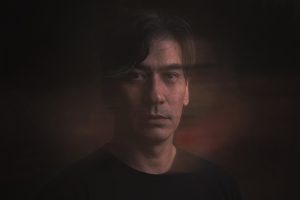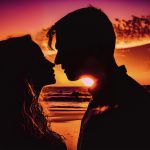Primarily, photography is the process of capturing and registering light, dismembering the word photography, we have Foto = luz + grafia = written
The light, so common to our eyes, was and still is the subject of study by artists and scientists. Today, we have the electric light and the laser beam. But imagine when it didn't exist and only sunlight and fire light illuminated everything in the world?
Things are visible because there are sources of light that project the light rays over them and the illuminated image is reflected. This reflection may have different appearances, depending on the condition of the emitting source, which is the light-generating instrument.
Emitting sources can be classified in two ways: natural, such as the sun; and artificial ones, created by man, such as fire and electronic flash, for example.
The light sources bring substantial differences in the color, contrast and texture of the photographs. Therefore, knowing its characteristics to get the best out of it is indispensable. This way, surprises are avoided due to unpleasant effects, such as chromatic divergence, for example.
Thus, the light emitted by any source has a very important attribute, called color temperature. This property will define the color tone that predominates in the photo and results in interesting effects or a total disaster, if you don't know how it works.
Kelvin scale

The color temperature present in the lighting is determined by the emitting source. In photography, it is organized by a scale, ranging from 3,400 to 6,500, expressed in Kelvin degrees. Scale created in 1854 by Irish mathematician and physicist Willian Thomson, known as Lord Kelvin.
On this scale, the reference color temperature for the photograph is approximately 5,600K and is that emitted by the sun. This same color temperature is found in electronic flashes. Therefore, we can fire the flash associated with daylight without prejudice to the colors.
As much as this difference seems imperceptible to our eyes, the variation in this temperature can greatly modify the result of the colors of an image. For, above 5,600K, the dominant hue will be blue-green, below 5,600K, we will have a reddish yellow tone.
The human eye adapts to different color temperatures, however, the digital camera needs to be adjusted to the light existing in the act of capturing the photo.
When adjusting white, the other colors will also be adapted to the type of light in the environment in which the balance was made.
White Balance

Most cameras offer automatic adjustment of the color balance known as Auto White Balance (AWB). However, mixing fonts with different color temperatures can cause color discrepancies. For example: lighting with fluorescent lamps, associated with light from a window, results in a color temperature that no preset adjustments will be able to cope with. As much as you use AWB, you may experience problems with the color result in your photos.


Then, update the WB for each lighting change or leave the camera in automatic color temperature adjustment (AWB) mode. Since, a passing cloud can cause a big change in the white balance, which, if not adjusted at the time of capture, will cause the image to need treatment at the time of editing.
*** Source: Photography Theory and Practice Book | Author Vitché Palacin
Anyway, we will meet in the next article on photographic technique.
So, did you like the article and want to contribute a coffee of thanks? Make your contribution through the QR Code below. Help the Foto Blog that helps you. Any value is welcome! A coffee is R$2 here, for example.

Related articles
| Make long exposure | Types of cameras | Light the principle (part 1) | Light the principle (part 2) |
| Photographer | Saquarema | Photo | Photography | Online Gallery | FotoBlog | Claude Monet | Photographic Technique | Color Photographic Technique





